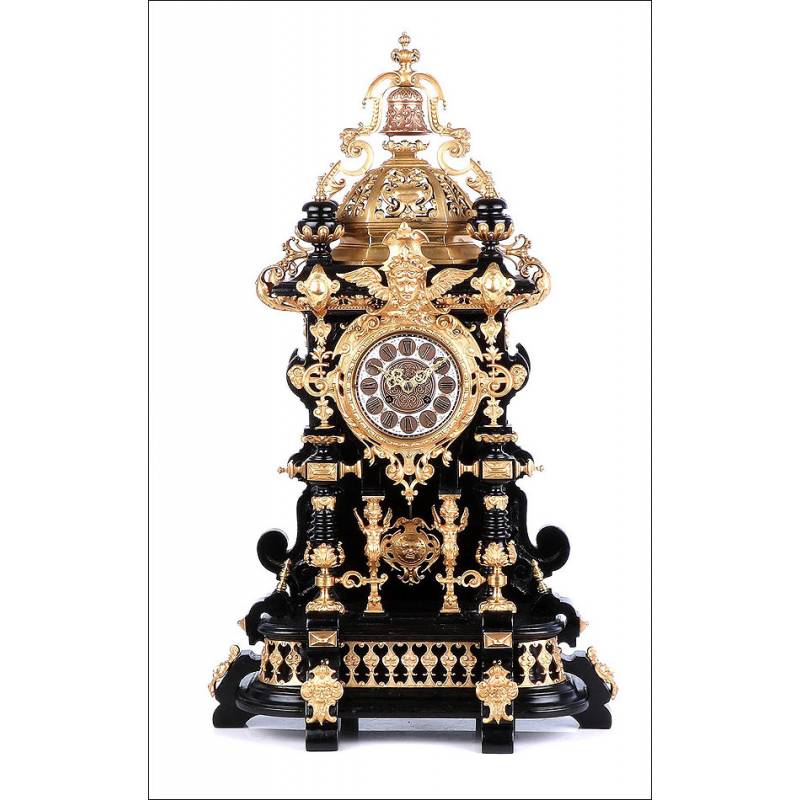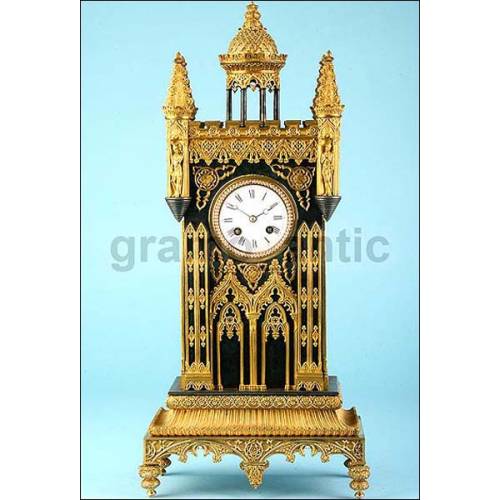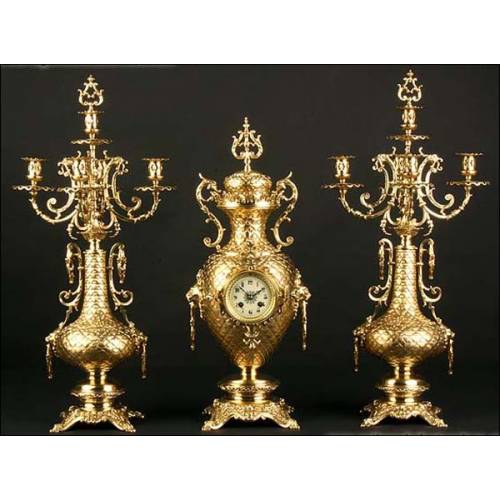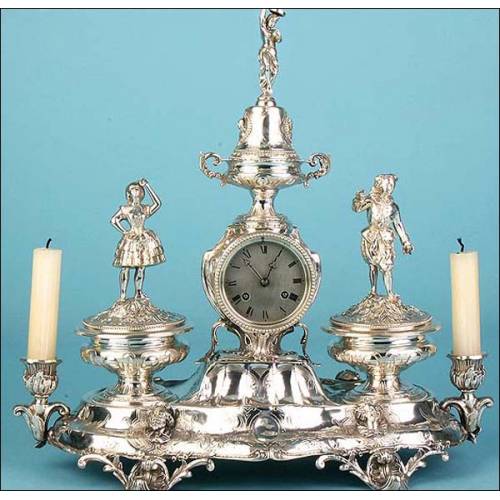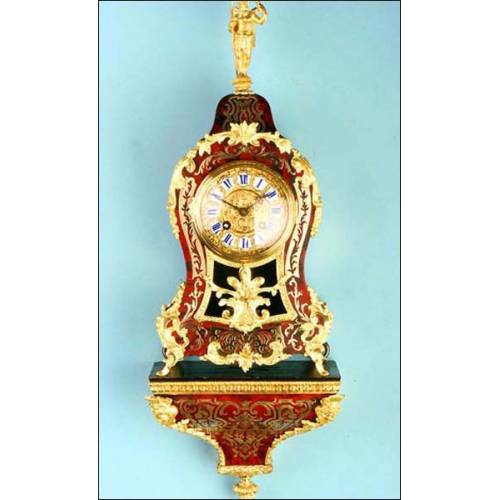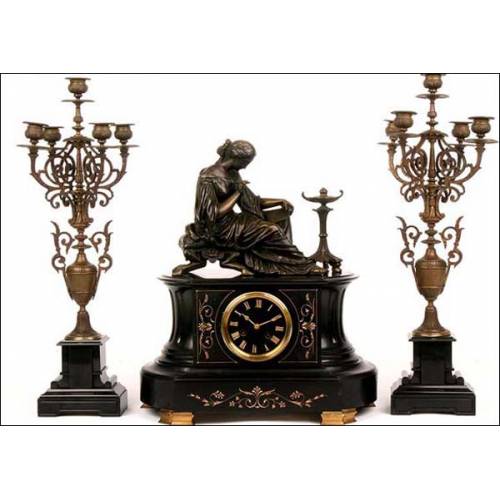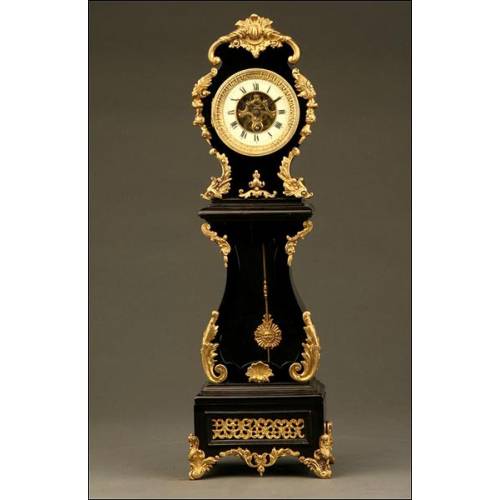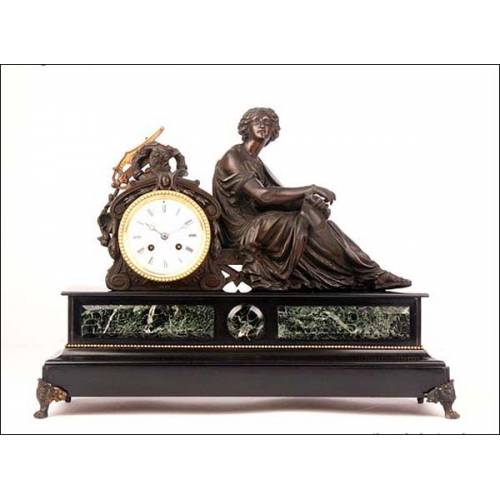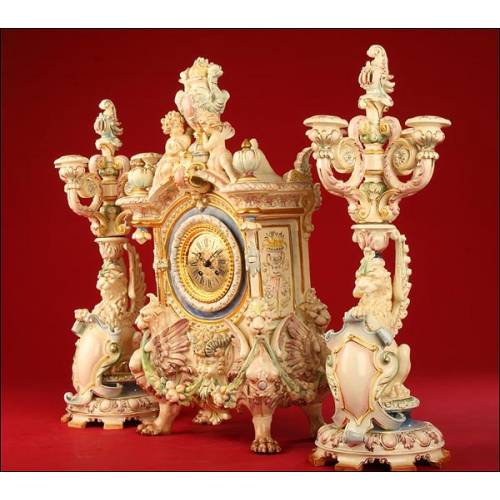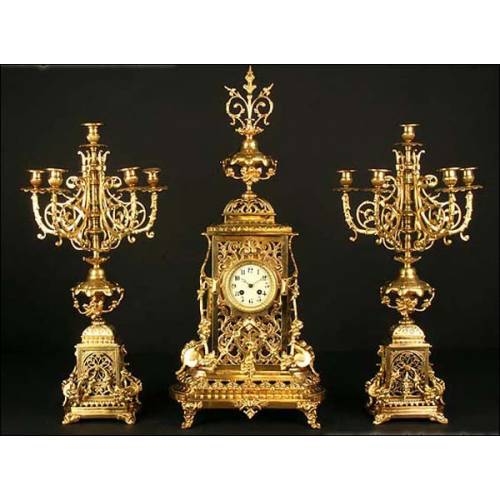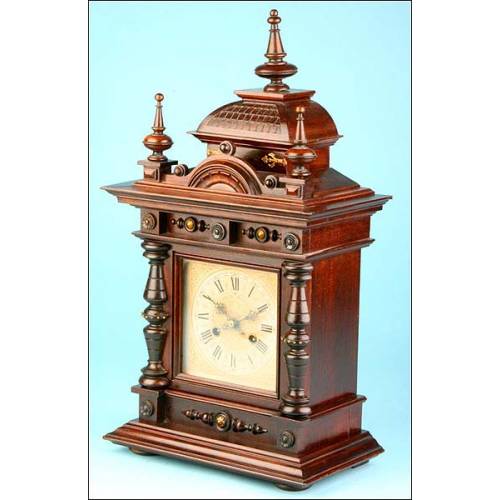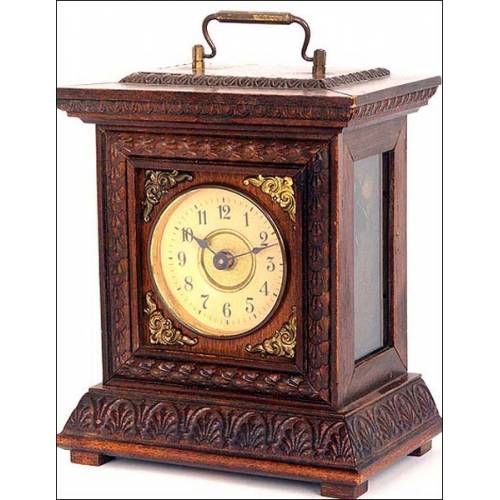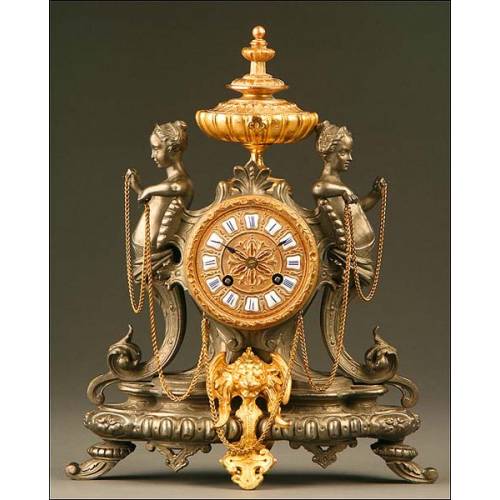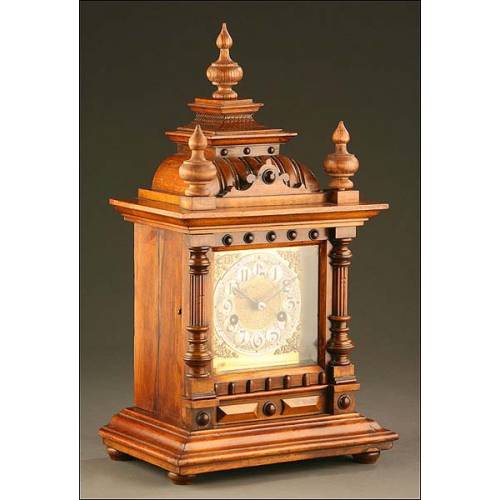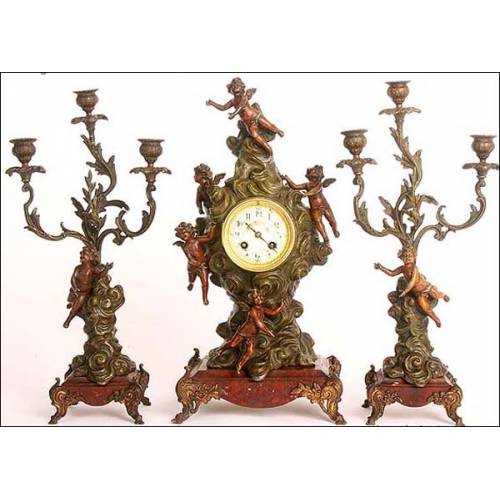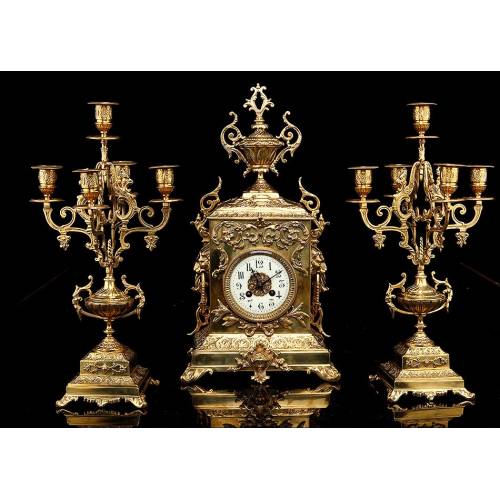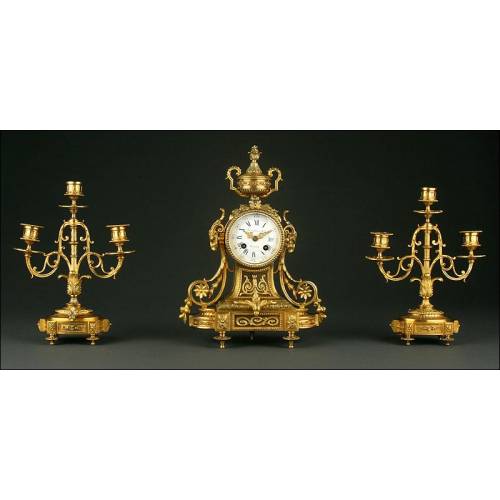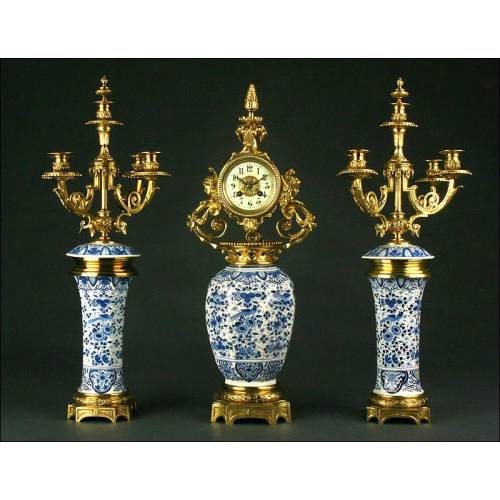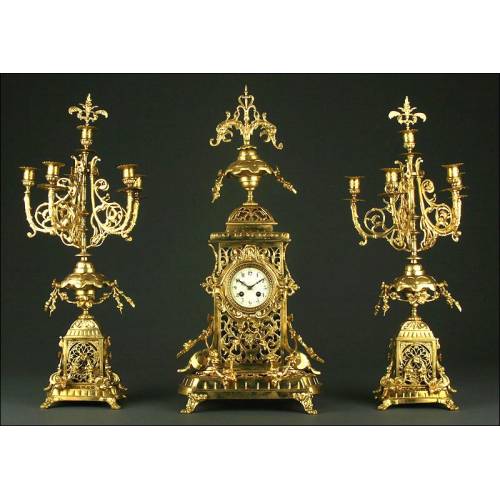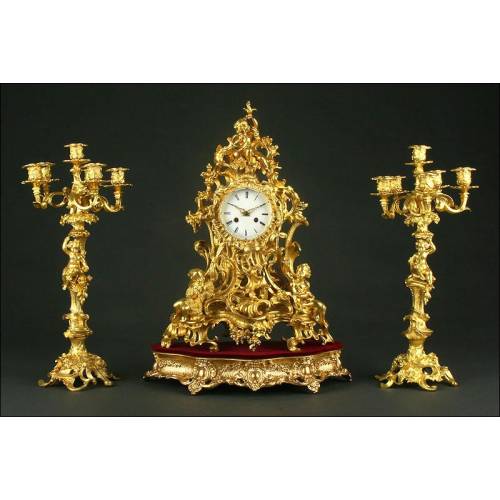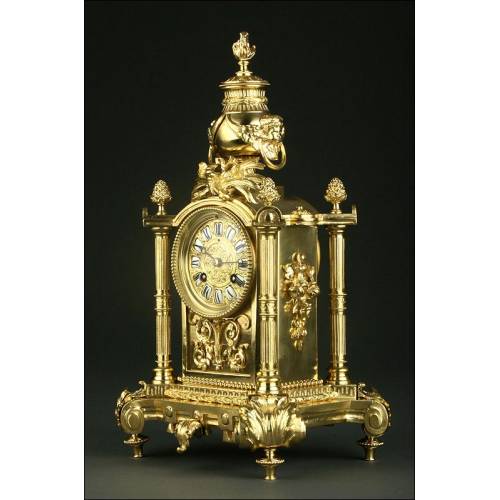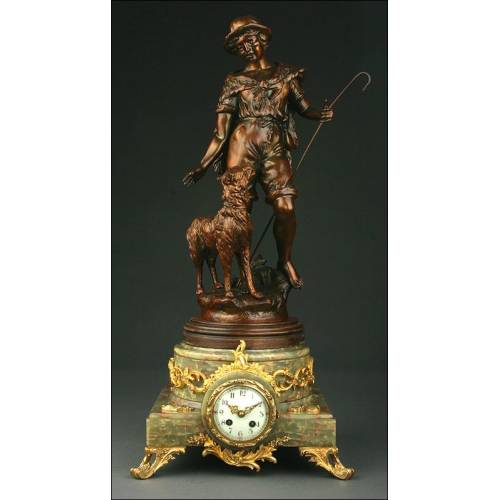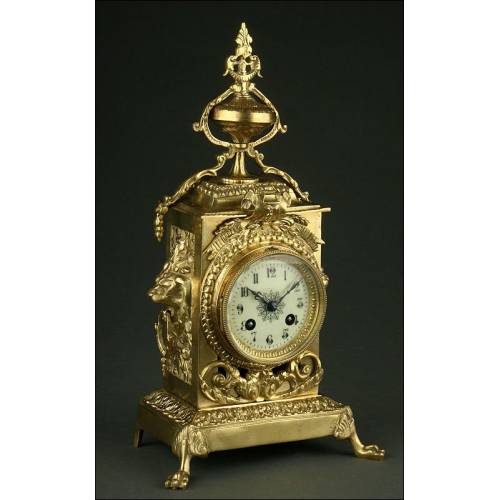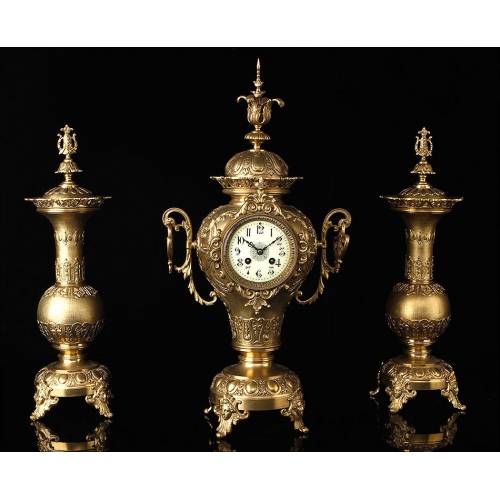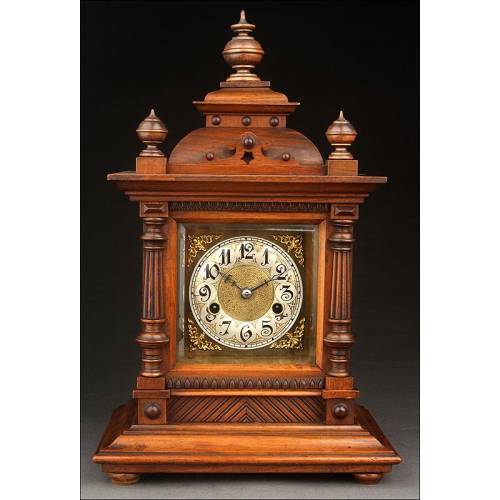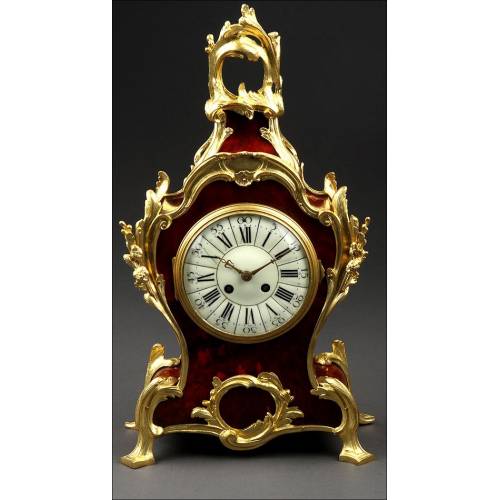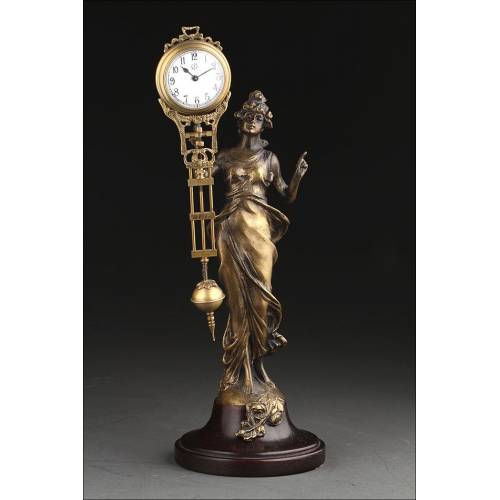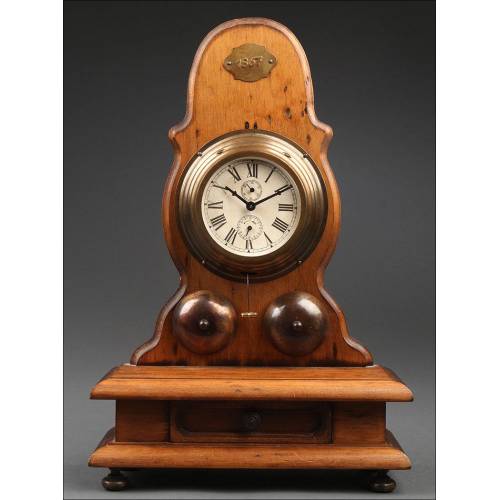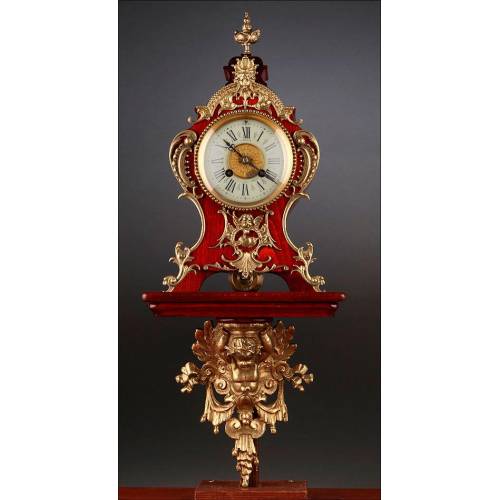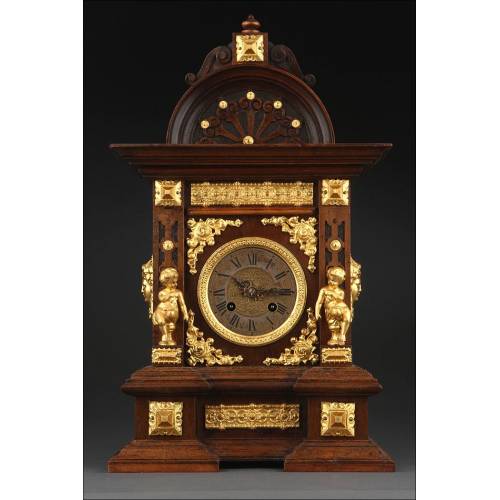C-771
Antique Lenzkirch Mantel Clock. 73 cms Height. Germany, Circa 1870
Superb Lenzkirch mantel clock, 73 centimeters high. In perfect working order and restored to detail. Collector's piece.
Sold!
Amazing antique Lenzkirch mantel clock made in Germany circa 1870. The clock has been carefully checked and tuned so today it works really fine. The movement chimes the hours and the halves on the bronze bell located at the top. The wonderful clocks box has been thoroughly restored in order to boast the superb look that we can appreciate in the images. The box is made of carved and turned solid wood and shows off an amazing artisanal work, worthy of the German clockmaker companys prestige. The wood is covered with a fine ebony-like finish in great condition, with a lovely satin glow that fills the design with style. The black finish makes a strong contrast with the many brass details that embellish the clock. The details are disposed following a balanced and symmetrical pattern: they make up a Neoclassic-style decoration with traces of the art deco style that would come some years later. We can see brass sun faces, fauns, cherubs with wings instead of arms, vases, flames and volutes in an amazing display of shapes and reliefs that turns the clock in a real work of art. The dial is made of enameled metal and bears black Roman numerals with golden borders. The hands are made of golden metal and show off complicated shapes and asymmetrical curves that match the dials center embossed decoration. The clocks movement can be reached through the boxs rear door and bears the engraved LENZKIRCH brand name and logo (a branch with a hanging pine cone). At the bottom we can see the engraved serial number 502505. The brands prestige and the amazing beauty of its design turn this antique Lenzkirch mantel clock in a real collectors item. Measurements: Width: 16.8 in / 42 cm. Height: 29.2 in / 73 cm. Depth: 10.8 in / 27 cm. History of Lenzkirch clocks Lenzkirch clocks were of such fine craftsmanship, wonderful ornamentation, and superb "in-house" design that they rank at the top of all German-made regulators. In fact, the varied movements and richly decorated clock cases practically priced them out of the market. Factory-produced clocks were first credited to the Lenzkirch Uhrenfabrik, located in the small town of Lenzkirch in the German Black Forest region. On August 31, 1851 Eduard Hauser and five partners created Lenzkirch Uhrenfabrik. In 1856 another partner joint the firms Under the leadership of Hauseer, the Lenzkirch clock factory gained a reputation that no other German factory had acquired so far. It came into full production about 1860, and Lenzkirch was awarded gold medals in the industrial exhibitions in 1860 in Villingen and 1861 in Karlsruhe. Edward Hauser retired March 1, 1899. In 1900 the company employed 480 workers. In the 1930s, the competition in this clockmaking area of the Black Forest eventually supposed the beginning of the end for Lenzkirch. In the middle of the Great Depression in 1932 the buildings were sold by the Junghans Brothers, who operated it as a satellite factory for about four years, and then the famous factory of the Lenzkirch Clock Company was gone. It is the opinion of many that the Lenzkirch factory was the best industrialized factory in the Black Forest. No other factory decorated as many of their cases in the way they did. Brass decoration and walnut and oak were used on many of their cases.

